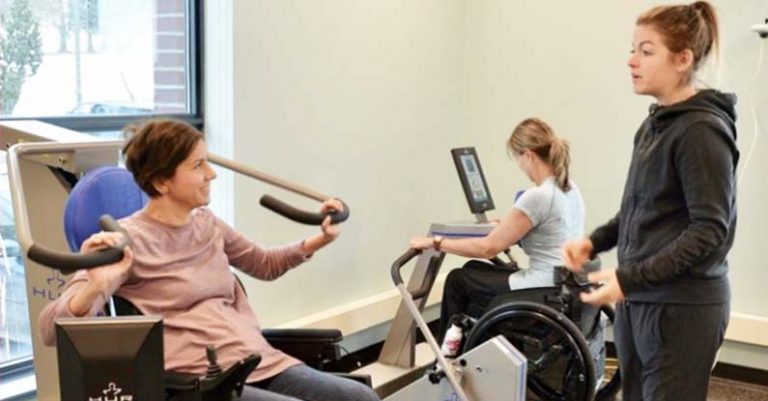Safety first! Safety should be top of mind when you begin your exercise or activity. Staying safe will help to prevent injury and let you feel more confident when you’re active.

Below are some general practical tips to be active safely, along with some important information to keep in mind if your injury is T6 or above.
Stay diligent to prevent overuse injuries
Your shoulders and wrists are particularly susceptible to overuse, but overuse injuries can also happen in other areas of the body. Tips to minimize the risk of overuse injuries include:
- Progress slowly—aim for little muscle soreness, not intense pain
- Vary exercises
- Include rest days
Learn proper techniques for your exercises
For example, ideal posture and alignment, proper support, and ways to maintain joint stability. If you exercise in the gym, ask a professional to evaluate your techniques. When you do the exercises at home, refer to videos that explain and illustrate proper techniques.
View examples of exercise videos
Check your skin for pressure sores/ulcers
If this is a concern, try shifting your body weight every 10 to 15 minutes. Consider equipping your wheelchair with a quality cushion to better relieve pressure. For more strategies to prevent pressure ulcers, visit the ONF Pressure Ulcer Guide.
Stay cool
Since your ability to sweat may be inhibited below the level of your injury, spray yourself regularly with a water bottle when exercising in hot conditions. If indoors, you can also use a fan to stay cool.
Include warm-up and cooling-down exercises
View examples of warm-up exercises
Contact a physician before starting a physical activity program
Is your spinal cord injury at or above T6?
If so, you should know the signs and symptoms of autonomic dysreflexia (AD). AD is a sudden, large and potentially dangerous increase in blood pressure. Signs of AD include severe headache, feelings of anxiety, profuse sweating and/or flushing above the level of injury, and blurred vision.
- Empty your bladder before exercise—this can help prevent AD.
- If you think you’re experiencing AD, remain sitting up; avoid lying down.
- Common AD triggers to look for are a kinked catheter, tight clothing, or a full bladder.
- If you deal with the suspected cause and the symptoms still don’t go away, call a physician or get to the nearest emergency room.
- To learn more about AD, visit JIBC ABC of AD in Spinal Cord Injury.
Explore more safety tips